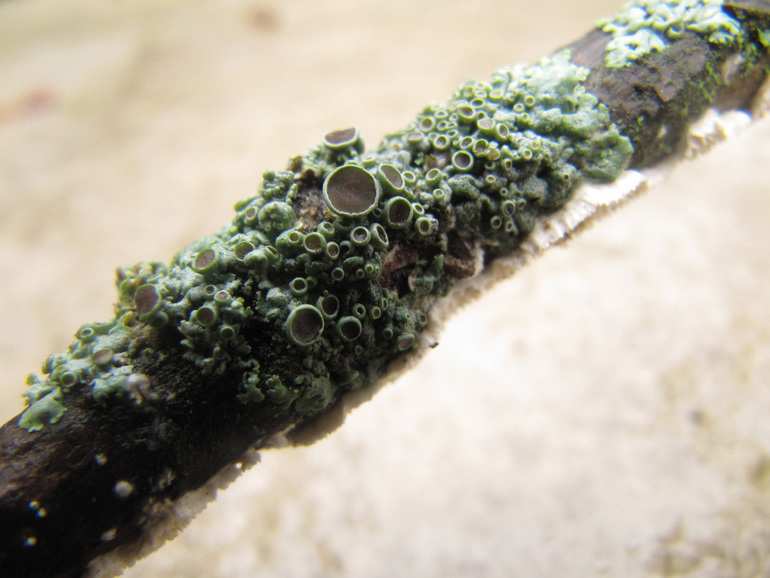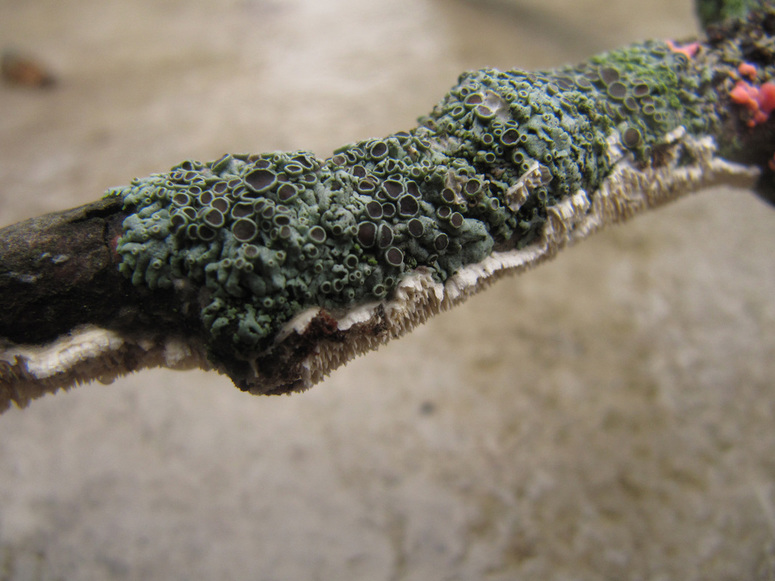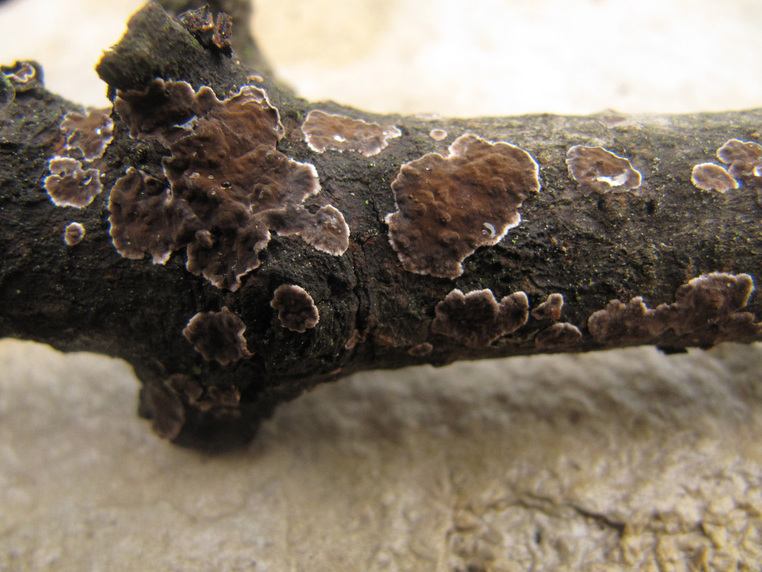Lichens
Life Abounds on a Dead Branch in Fall
Posted by R.G. Thorn and N. Zitani, 21 October 2011
One small dead branch that fell into our biodiversity garden from our neighbor's Norway maple had a spectacular community of native fungi and lichens growing on it.
One small dead branch that fell into our biodiversity garden from our neighbor's Norway maple had a spectacular community of native fungi and lichens growing on it.
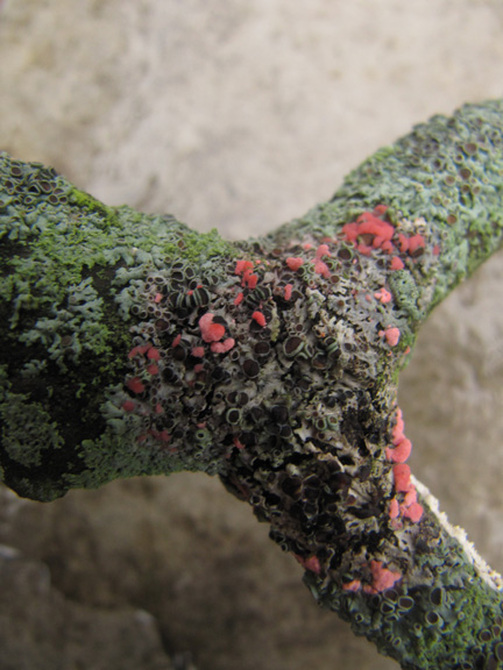
A community of fungi on a fallen branch of Norway maple: Two lichens: bright, yellow-green filigree of "Candelaria concolor", and grey-green lobes and black, cup-shaped fruiting bodies of "Physcia aipolia". The coral pink nodules are a fungus "Marchandiomyces corallinus" that is a parasite on the Physcia colony.
A symbiotic relationship is an intimate biological association between two different organisms. Lichens are fungi in a symbiotic relationship with photosynthetic green algae or cyanobacteria. The fungus and green alga (or cyanobacterium) are partners in an obligatory relationship - the lichen. The fungus provides the structure and takes up the chemical nutrients (from precipitation and runoff) that both partners need in order to grow. The alga or cyanobacterium uses photosynthesis to produce sugars. These sugars feed both partners, neither of which has an independent life without the other. A lichen is a dual organism (or sometimes even a triple organism, since some lichens house both a green alga and a cyanobacterium). Lichens are able to inhabit environments that are inhospitable to most plants and animals: deserts, the arctic and antarctic, and dead lower branches of living trees. Importantly, the lichens pictured didn't kill the branches they are growing on. The branches died because they were shaded out by branches higher in the tree. The lichens simply grow on them because they provide a suitable surface. For more excellent information about lichens and great photos, see Lichens of North America, Stephen Sharnoff's Lichen Home Page, and Alan Silverside's Lichen Pages.
Lichens can be found all year long, but are often more obvious in the Fall. At this time, leaves of many of our native trees turn colors and then drop off, exposing lichens on trunks and branches. The winds blow, bringing down some of the dead lower branches that lichens grow on. Lichens turn brighter shades of green in wet weather typical of Fall. So, when a dead branch falls in your garden, take a close look - you may have a whole community of organisms living there. (all photos RGT, branches about one inch, or 2-3 cm in diameter)
Lichens can be found all year long, but are often more obvious in the Fall. At this time, leaves of many of our native trees turn colors and then drop off, exposing lichens on trunks and branches. The winds blow, bringing down some of the dead lower branches that lichens grow on. Lichens turn brighter shades of green in wet weather typical of Fall. So, when a dead branch falls in your garden, take a close look - you may have a whole community of organisms living there. (all photos RGT, branches about one inch, or 2-3 cm in diameter)
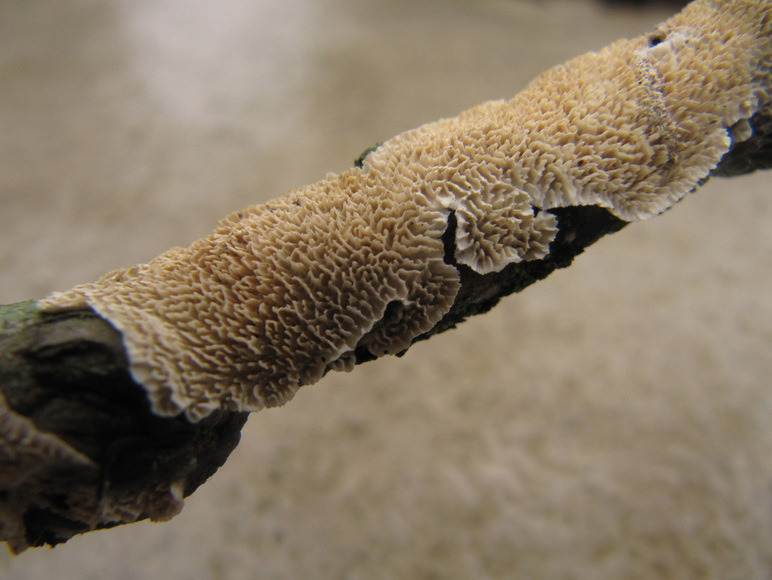
The toothy fruiting body of a wood-decay fungus "Irpex lacteus" (note that we turned the branch over, so we are looking at the bottom side of the branch). The fungus has been growing in and decaying the dead branch for some time and is now producing the fruiting body where spores are produced (all over the surfaces of the spines). "Irpex lacteus" causes a white rot, and is very common on dead lower branches of hardwood trees.
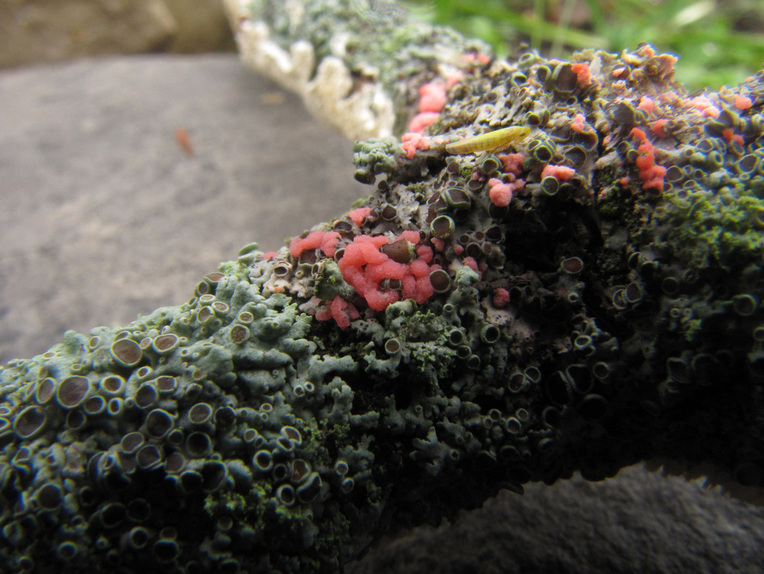
A close-up of the lichen parasite "Marchandiomyces corallinus". This fungus attacks a variety of lichens ("Physcia aipolia" in this case), breaking down the lichen and stealing its food for its own use, and producing pink balls that are thought to break off and disperse to other lichen-clad branches (perhaps carried on the feet of insects or birds?). The yellow insect (homopteran) just landed in time to be photographed.
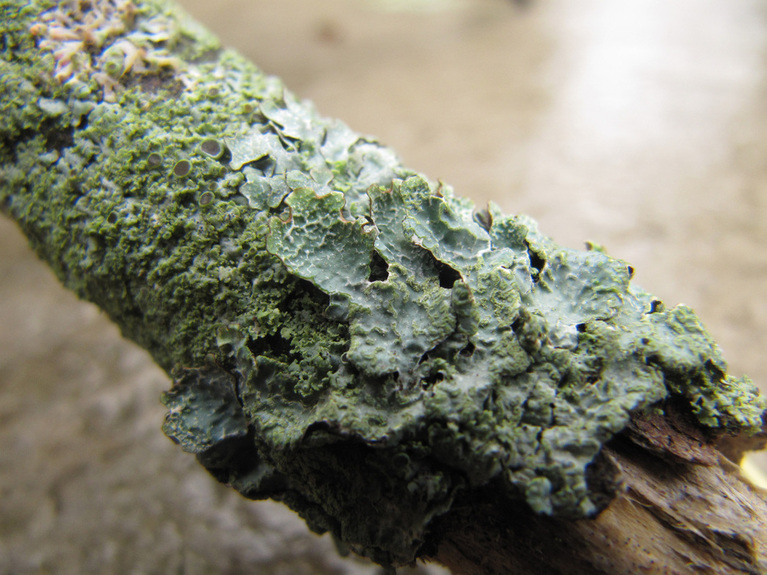
Another lichen, "Parmelia sulcata", nearby on the same branch. This lichen individual does not have fruiting bodies to produce spores (other individuals of this species sometimes do), but spreads itself as minute, powdery packages called soredia that are produced in the granular veins you can see in the foreground. Each powdery granule contains cells of both the fungal and algal partner, so there is no need to rediscover each other when they land on a suitable new branch.
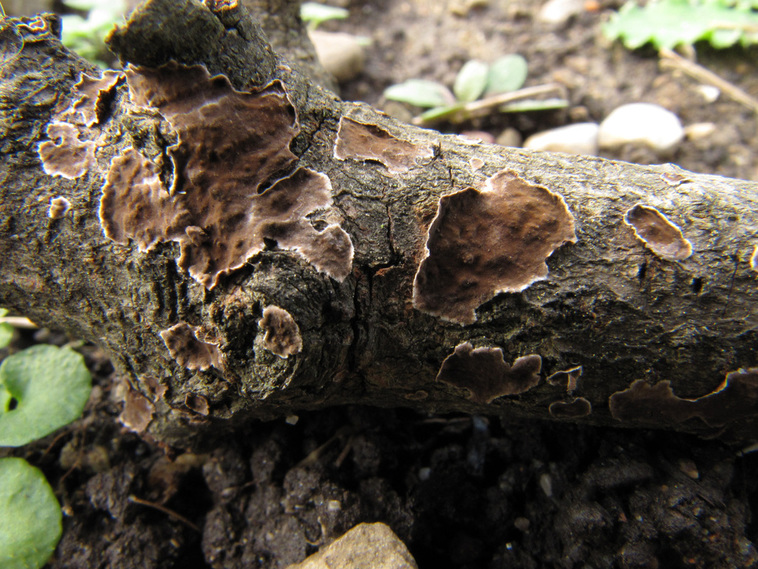
The same fruiting bodies after a few hours in dry air - fading in color and curling up at the edges. Amazingly, these fruiting bodies can revive during the next rains, to produce another crop of spores. Many are active during winter thaws, when the branches are wet for a few hours during the daytime and frozen solid at night. Winter - yes, it is coming! - is a fine time to find and study lichens and other fungi on trunks and branches.
